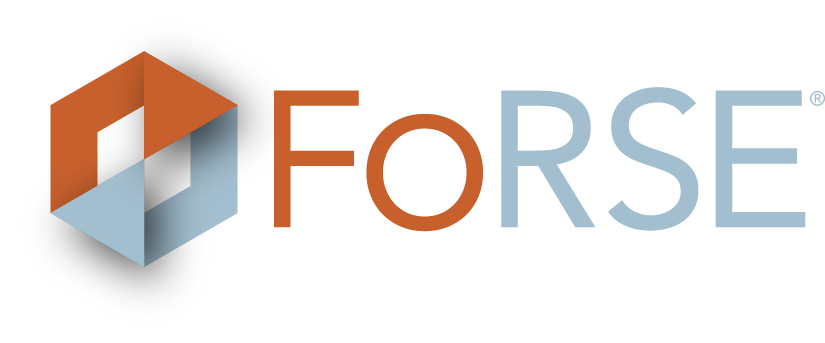By: Wayne Johnson, VP, Special Operations
In today’s technology landscape, countless software applications exist to solve virtually any business challenge. The positive is that you have many options; the challenge is how you decide. How do you make sure you make the best decision for your organization?
For more than 25 years, I’ve been involved in purchasing solutions as a CIO, building solutions as an entrepreneur, teaching solutions at a university, and selling solutions for various software companies. This blog will give you a framework that you can use to evaluate software solutions, specifically Software as a Service (SaaS), and some traps to avoid.
Understand Where You Are
The first step may sound extremely simple, but it is unexpectedly not. Like solving an addiction problem, admitting and defining existing challenges is critical. Albert Einstein once said, “If I were given one hour to save the planet, I would spend 59 minutes defining the problem and one minute resolving it.” The challenge is that we are guilty of jumping in and looking for a solution without fully understanding the problem. Defining the problem sounds great, but how do you do this?
- Document how you do things today. What are the processes, actions, and workflow that you currently perform? Do this across all parts of your organization, for example, sales, marketing, admissions, care delivery, and alumni management.
- Document each process’s shortcomings, roadblocks, and limitations within each part of the organization.
The combination of both of these will create your use cases. Prioritize these use cases based on organizational impact. Try to be as quantitative as possible. For example, complex clinical workflows may contribute to staff burnout. Has this impacted clinician satisfaction? Have you seen an increase in sick days? Having a baseline will help monitor and measure the success of the solution you choose. This gets us to the next step–know where you want to be.
Know Where You Want to Be
Again, knowing what you want from your solution is a deceptively simple statement that comprises a complex process. In this step, we define success. The biggest challenge is using quantitative goals vs. qualitative goals, and the easiest way to describe the difference is through examples:
- Qualitative – The best solution will be the easiest to use.
- Quantitative – The best solution will allow intake coordinators to leverage all the same information as the admissions coordinator without re-entering information.
These types of measures exist on a continuum. The objective is to move toward quantitative measures as much as possible. The reason why this is so critical is that qualitative evaluation criteria can succumb to bias. One person may think a solution is easy to use, while another may find it complex. Qualitative evaluation criteria introduce an opportunity for individual affinity to enter your evaluation and, ultimately, your selection.
It is crucial in this step not to try to explain the path to the outcome you are looking for unless it is some legal or compliance requirement. The reason for not defining the direction from where you are today to your ultimate goal is that there could be another more efficient and effective way to achieve your objective. If you start your evaluation with “because we’ve always done it this way,” you may close yourself off from other potentially better ways of realizing your goal. Or worse, you may require custom development that is costly to build and maintain with little to no return.
For example, when I was younger, I was shopping for a tool to help me change the brakes on my car. I was looking at the clamps and was going to purchase a basic clamp when a store attendee asked me what I was using it for. When I mentioned that I was using it to change my brake pads, he showed me a specific clamp made for brakes that I did not know about. This saved me both money since it was cheaper and time because I was able to do the job much more quickly.
Putting It All Together
Now that you have gathered all this information, you can assemble it into your decision criteria. The decision criteria will serve as your formal measures to compare each vendor’s offerings, including capabilities, support, and cost. These decision criteria will give you an accurate and measurable comparison between all the vendors. Decision criteria are broken down into two categories:
- Technical Criteria – does the vendor’s solution meet your use cases while being compliant with the rest of your existing infrastructure and integrations?
- Business Criteria – does the vendor’s solution align with your business requirements, such as budget, payment terms, etc.?
Some organizations pull criteria into a list or table and weight each item as part of the evaluation process. Whatever your scoring methodology, it is important to have clear definitions applied consistently across each solution. This will help drive consensus, tracking, and progress measurement well into solution implementation.
Pitfalls to Avoid
- Not Knowing Your Use Cases – This is the most common pitfall. When a company is looking to purchase a SaaS platform and rushes into a purchase without understanding and documenting requirements, they are destined to fail. Vendors can easily sway prospects with “cool” features that look nice and seem innovative but provide zero value to any of your use cases. And use cases are an important tool for building consensus. When all of your stakeholders have weighed in and feel that their priorities are represented in the vendor selection process, you will have a much easier time driving engagement, adoption, and success across your organization.
- Long-Term Contracts – Some vendors engage in devious deals, specifically long-term contracts that include the carrot of a discount. In the SaaS world, SaaS companies do not make money from a contract for at least the first 12 months. Year-one revenue offsets the cost of sales and development. Most SaaS companies don’t see a profit until after the second year, less operational and maintenance costs. The benefit to customers is that this situation motivates SaaS providers to keep their customers happy. It is completely normal to sign a one, two, or three-year contract; however, some companies are pushing for contracts that are seven, eight, and nine years. This disincentivizes the vendor from making sure you are happy since you are now contractually obligated to use them for the contract term. The only time I have ever seen a purchase longer than a three-year term is when a company has been using the software for one to three years and has proven the technology and the relationship with that vendor.
Conclusion
As you can see, preparing for a significant SaaS purchase can be time-consuming and riddled with anxiety about making the right decision while avoiding potential pitfalls. Following a quantitative, use case-driven process helps ensure that you don’t have buyer’s remorse once you make the selection and go live. If this is your first time selecting a major SaaS platform, Sunwave can help walk you through the process above to ensure that you make the right decision.



